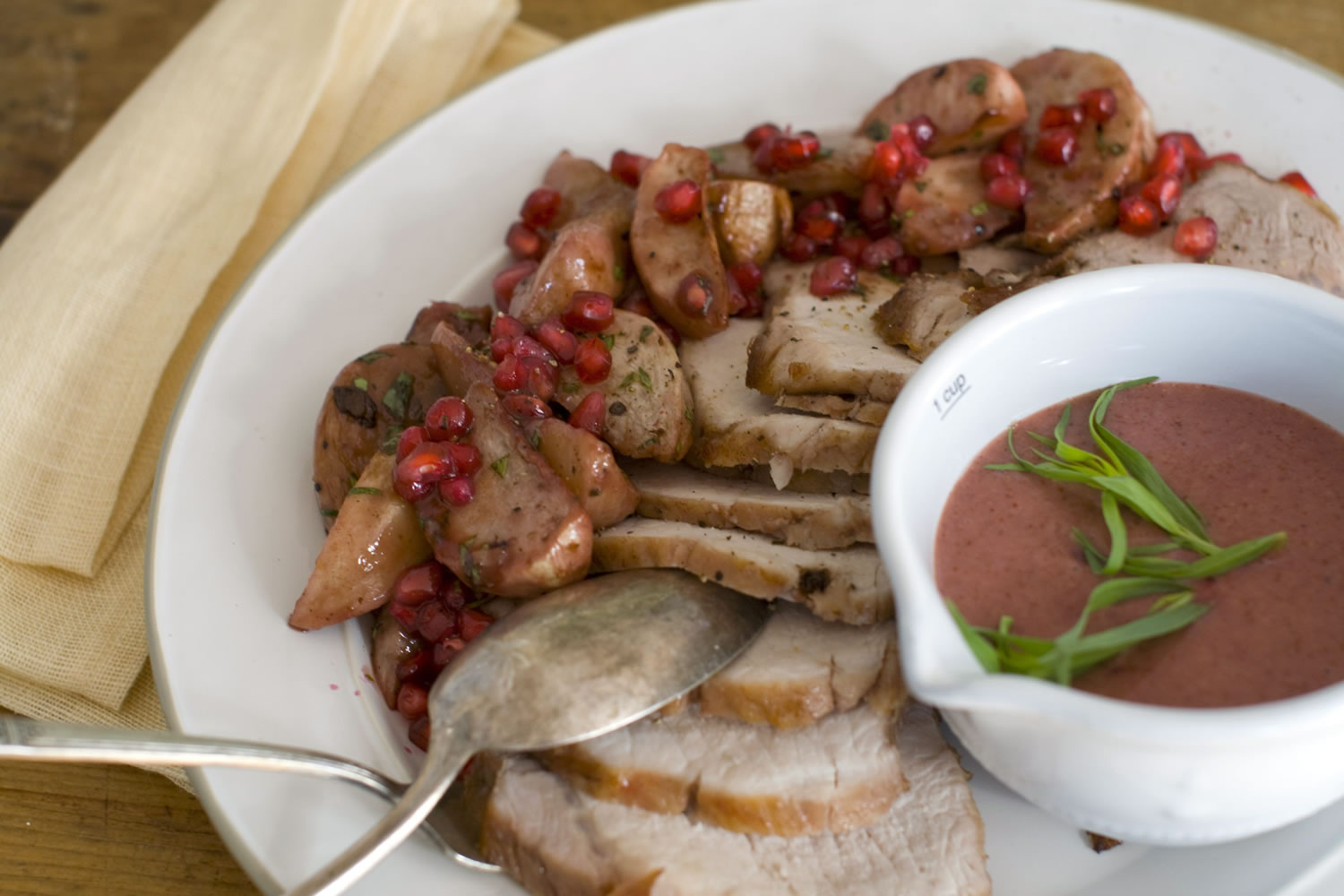For me, Christmas dinner means ham. I just have to have one. But sadly, ham is loaded with fat, calories, salt and nitrates.
So with this holiday recipe, I decided not to use ham, but to cook and season a healthier pork loin in way that reminds me of ham.
Ham comes from the hind leg of a pig, from the shank to the hip. Pork loin comes from the top back of the pig, making it one of the leanest cuts of pork available and comparable to chicken breast. Pork loin also has other advantages — it’s relatively inexpensive, easy to carve and pairs beautifully with pretty much any kind of sweet glaze.
The trick to producing a moist and tasty pork loin roast is to make sure the meat is prepared with plenty of moisture, and to then preserve as much of that moisture as possible. I achieve this by brining the meat, roasting it, then sautéing it.



